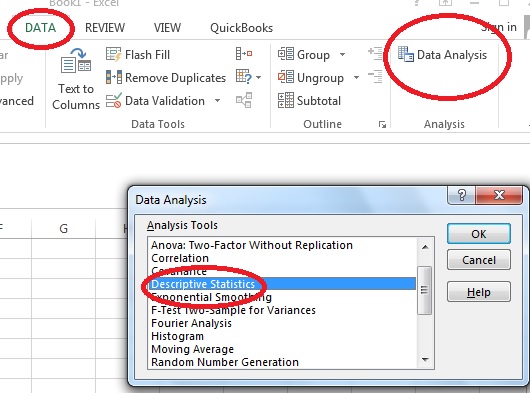

- #HOW TO CALCULATE STANDARD ERROR OF MEAN IN EXCEL HOW TO#
- #HOW TO CALCULATE STANDARD ERROR OF MEAN IN EXCEL SERIES#
Standard Deviation - shows the amount of variability of the data, i.e.Percentage - adds error bars with the default 5% value, but you can set your own percentage by choosing More Options.Standard Error - displays the standard error of the mean for all values, which shows how far the sample mean is likely to be from the population mean.Click the arrow next to Error Bars and pick the desired option:.

Click the Chart Elements button to the right of the chart.In Excel 2019, Excel 2016, and Excel 2013, inserting error bars is quick and straightforward: You can also set your own error amount and even supply an individual value for each error bar. You can put error bars as a standard error, percentage, fixed value, or standard deviation. In scatter plots and bubble charts, both vertical and horizontal error bars can be displayed. In Microsoft Excel, error bars can be inserted in 2-D bar, column, line and area graph, XY (scatter) plot, and bubble chart. In other words, error bars can show you how far from the reported values the actual values might be.
#HOW TO CALCULATE STANDARD ERROR OF MEAN IN EXCEL HOW TO#
How to make individual error bars of different lengthsĮrror bars in Excel charts are a useful tool to represent data variability and measurement accuracy. #HOW TO CALCULATE STANDARD ERROR OF MEAN IN EXCEL SERIES#
How to put error bars for a specific data series. How to add error bars in Excel 2013, 20. For this, they calculate confidence intervals, or margins of error, and display them by using what is known as error bars. And because scientists love quantifying things, they found a way to quantify uncertainty. In science, uncertainty is the beginning of an investigation. In medicine, it generates innovations and leads to technological breakthroughs. In business, it prepares your company for the future. In truth, uncertainty is not a bad thing. Many of us are uncomfortable with uncertainty because it is often associated with lack of data, ineffective methods or wrong research approach. You will learn how to quickly insert standard error bars, create your own ones, and even make error bars of different size that show your own calculated standard deviation for each individual data point. Which is the actual geometric standard deviation is apparently a matter of debate and, perhaps, dependent on a definition of terms.The tutorial shows how to make and use error bars in Excel. It provides a result of 1.3294, which is significantly different from what is returned using the simpler formula from Wikipedia. =EXP(STDEV(LN(A1:A4))+AVERAGE(LN(A1:A4)))Īgain, this must be entered as an array formula. Note that it references the results of the above formula as the "standard deviation of the log values," insisting that you need to add the average of the log values to the standard deviation and then use the EXP function, in this manner: However, there is some muddiness, as evidenced in this mathematical treatise at the Motley Fool: This provides a result of 1.1745, rounded to four decimal places. If you place these values in cells A1:A4, then apply the simplest form of calculating geometric standard deviation found on the Wikipedia page, you would enter the following as an array formula: Let's assume that you have calculated the compound annual growth rate for an investment for four years. One reference that explains the math behind a geometric standard deviation is found on Wikipedia: How you calculate a geometric standard deviation, however, depends on which resource you are referencing. How you calculate the geometric mean is rather easy-you use the GEOMEAN function built into Excel. The place that a geometric mean is most often used (and, therefore, a geometric standard deviation) is when calculating investment returns over time, especially when the returns involve compound interest. He cannot seem to figure out how to calculate the geometric standard deviation, however. He uses built-in Excel functions to calculate many of these, such as the geometric mean. Jim has a set of data on which he needs to calculate some statistical information.






 0 kommentar(er)
0 kommentar(er)
